GE Profile 30 in. 5.6 cu. ft. Slide-In Gas Range with Self-Cleaning Convection Oven and Air Fry in Stainless Steel
-
( 9 Reviews )Rated 4.78 out of 5 based on 9 customer ratings09
Air fry healthier, crispier options with no preheat needed. Built-in WiFi controls oven functions on your smart device. A finish that makes it easy to keep your appliances clean.
-
GE 5.3 cu. ft. Slide-In Gas Range with Steam-Cleaning Oven in Stainless Steel
Rated 4.56 out of 509GE 5.3 cu. ft. Slide-In Gas Range with Steam-Cleaning Oven in Stainless Steel
Rated 4.56 out of 509 -
GE 30 in. 5.0 cu. ft. Gas Range in Stainless Steel
Rated 5.00 out of 503GE 30 in. 5.0 cu. ft. Gas Range in Stainless Steel
Rated 5.00 out of 503
GE Profile Appliances are built on the belief that modern life needs modern solutions. GE Profile Appliances are designed to make daily life simpler by incorporating Smart Home technology and cutting-edge features in every appliance. GE Profile’s sleek design and quality engineering will give your kitchen the most up-to-date look and the best innovative performance you’ve been looking for.
- No preheat air fry – with this air fryer right in the oven, you can cook healthier, crispier versions of your favorite foods, there’s no preheat required and it shortens the cook time because every minute counts
- Built-in WiFi – this smart oven features built-in WiFi so you can control oven functions with the SmartHQ app on your smart device
- Fingerprint resistant stainless – Easily wipe away smudges and fingerprints for a look that’s always sparkling clean
- Fit guarantee – this gas range will fit your existing 30″ cut-out, or GE appliances will help pay for modifications up to $300, see offer criteria and details
- Edge-to-edge cooktop – continuous, edge-to-edge cooktop give you a large cooking space and can handle any cookware
- Tri-ring burner – A versatile burner offers three different-sized flame rings on a single burner element, so it’s like having three burners in one
- Reversible grill and griddle – This extra-large, reversible griddle and grill combination lets you enjoy the best in cooking versatility
- Dual purpose center burner – This flexible gas cooktop burner lets you choose between round and oval burner shapes
- Backlit glass touch controls – Backlit touch controls give this oven a high-tech look with a display that disappears when not in use and reappears when touched
- Power boil burner – This 18,000-BTU power boil element produces intense heat to boil water fast
- Synchronized clocks and lights – Synchronize your oven and GE Appliances over-the-range microwave so that clocks are always matching and lights automatically come on when a burner is activated with Chef Connect
- True European Convection – This oven features True European Convection, an advanced convection system that uses a third heating element and fan for the highest level of heat and air circulation
- Never-scrub oven racks – These durable oven racks can be left in the oven during the self-clean cycle so you never have to scrub
- Precision temperature probe – An innovative temperature probe that helps you achieve the perfect level of doneness for oven favorites
- Self-clean with steam clean – This self-cleaning oven uses optional steam cleaning for light soils to clean the oven cavity with less heat and odor
- Limited 1-year entire appliance warranty
Additional information
| Depth With Door(s) Open 90 Degrees (In.) | 47.5 |
|---|---|
| Oven Interior Depth x Height x Width (in) | 20.625 x 19.5 x 24 |
| Product Depth x Height x Width (in) | 29.5 x 36.5 x 30 |
| Range Size | 30 in. |
| Certifications and Listings | ADA Compliant,CSA Certified,Star-K,UL Listed |
| Manufacturer Warranty | Limited 1-year entire appliance |
Average Rating
4.78
Rated 4.78 out of 5 based on 9 customer ratings
095 Star
77.78%
4 Star
22.22%
3 Star
0%
2 Star
0%
1 Star
0%
Submit your review Cancel reply

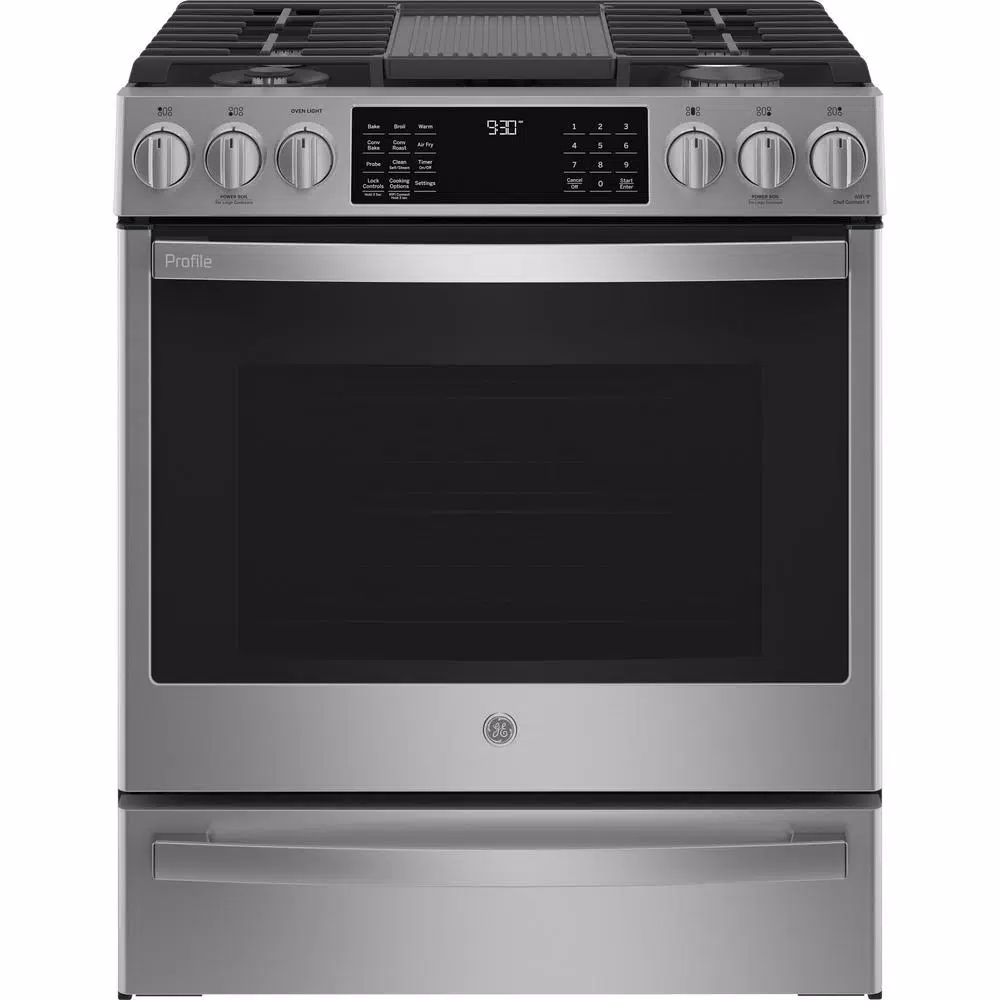
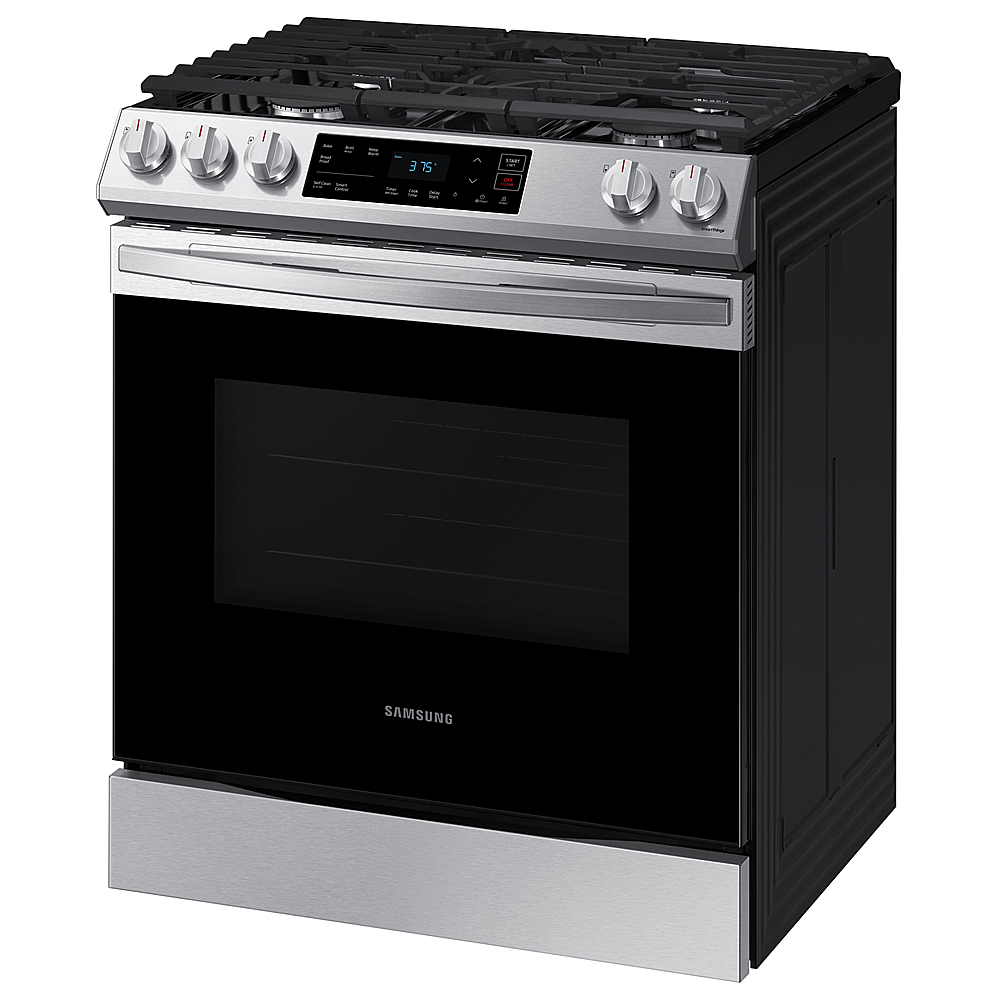
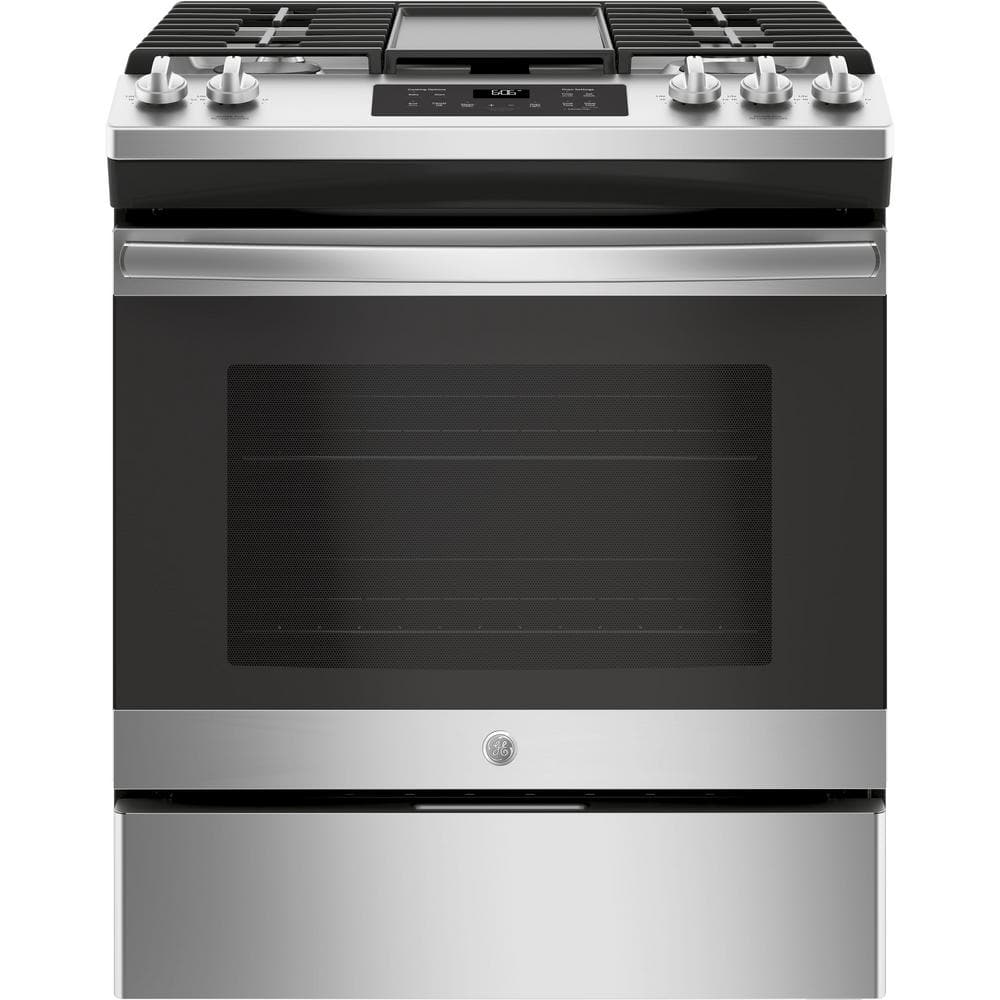
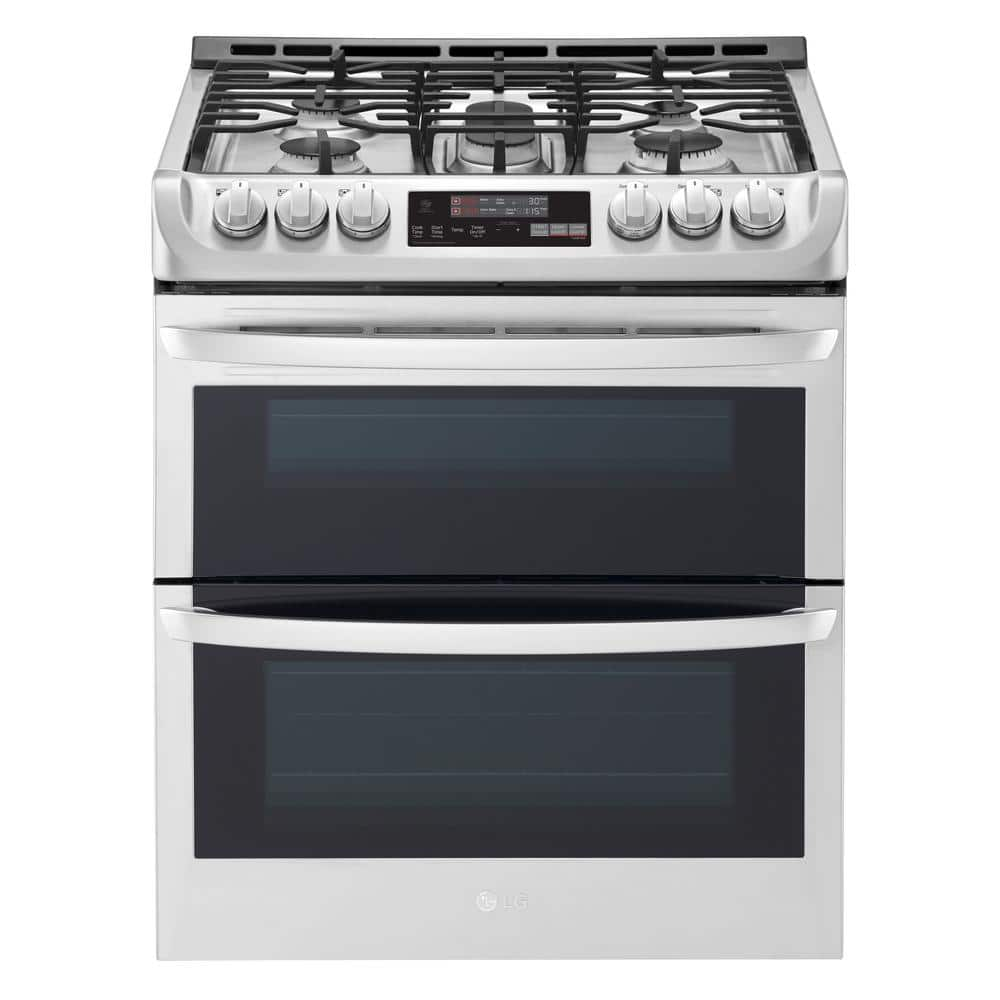
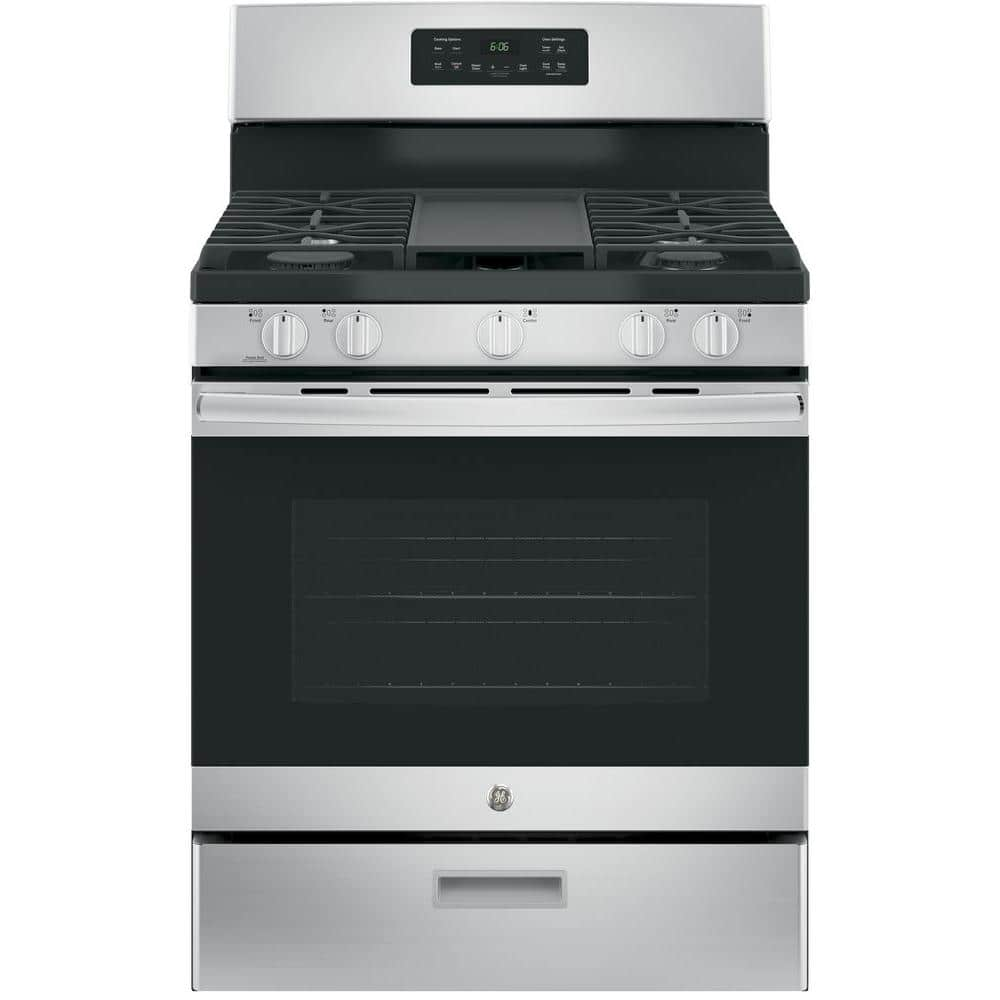
by Chris
Was not installed properly, missing rear trim piece.
by Suzanne
Amazing Range, very happy.
by Aileen
Tried the Air Fry feature, worked great, love the cooktop burners also.
by Katrina
This range exceeds all my expectations. From ease of cleaning to having very accurate temperatures.
by Ann
I am enjoying having 5 burners. I have not used the airfry feature, yet, but I am pleased with oven performance for baking and roasting.
by Barry
Wife loves it. Works and looks great in our kitchen. Cleans up nice and was easy to install.
by Louis
Easy to use, learning all functions is quick & easy, information instructions make sense, easy to follow.
by Bill
we like the styling, accuracy of the heat from the range and the oven
by Doug
We love this stove as compared to our old electric one! I don’t understand what finger print resistant means because we clean fingerprints constantly. But it doesn’t effect how well t works!